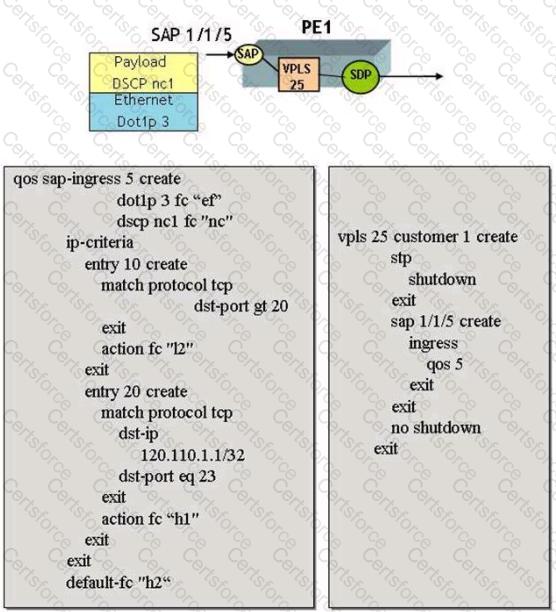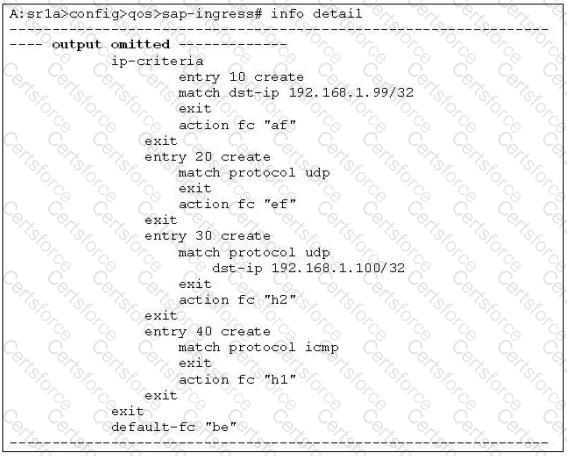Click the exhibit button below.

Based on the configuration shown below, name the forwarding class to be associated with a TCP packet encapsulated inside an Ethernet frame that arrives on SAP 1/1/5 with the following characteristics:
Destination IP address = 120.110.1.1
TCP port number = 23
DSCP value = nc1
Dot1pvalue = 3
What is the maximum number of SAP-ingress policies that can be applied on a SAP?
Which of the following is NOT an advantage of deploying queue-groups on a network port?
Which of the following are categories of forwarding classes on the Nokia 7750 SR? (Choose two)

According to the SAP-ingress QoS policy shown, which of the following statements about packets processed by policer 6 is TRUE?
Forwarding subclasses are only relevant to, and are therefore applied within the context of, a _____________policy.
Which of the following rate-limiting approaches are used on the Nokia 7750 SR? (Choose two)
Click the exhibit button below. A partial SAP-ingress policy configuration is shown below. A UDP video stream is sent to a PC with IP address 192.168.1.100. Given the SAP-ingress policy, to which forwarding class is the traffic matched?

Click the exhibit button below. Given the SAP-ingress policy, which of the following statements are TRUE? (Choose three)

Which of the following statements regarding scheduling on the Nokia 7750 SR is TRUE? (Choose two)